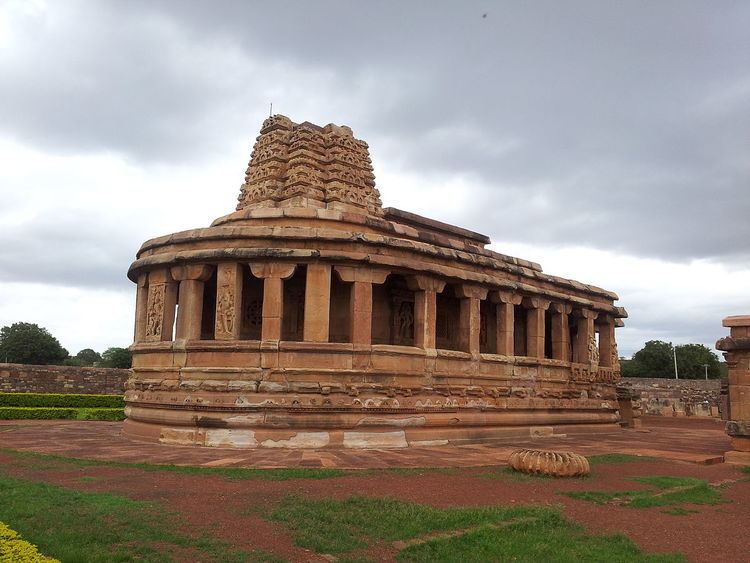District Bagalkot Primary deity Unknown | Location Aihole Address Aihole, Karnataka 587124 | |
 | ||
Date built late 7th - early 8th century Hours Open today · 6AM–6PMWednesday6AM–6PMThursday6AM–6PMFriday6AM–6PMSaturday6AM–6PMSunday6AM–6PMMonday6AM–6PMTuesday6AM–6PM Similar Lad Khan Temple, Mahakuta group of temples, Badami cave temples, Banashankari Amma Temple, Bhutanatha group of temples | ||
Durga temple aihole
The Durga temple is a medieval era Hindu temple located in Aihole in the state of Karnataka, India. It is part of a pending UNESCO world heritage site.
Contents
The temple was built between the 7th and the 8th century by the dynasty of the Chalukyas. The architecture of the temple is predominantly Dravida with Nagara style also is used in certain areas. The Durga Temple belongs to the Chalukyan period.
Even though the temple features a Durga sculpture, the origin of the name is not because of its dedication to Durga goddess, but because Durga means protector or a fortress. The temple formed part of a fortification probably of the Marathas.
The temple is dedicated to either Vishnu or Shiva as the representations of Vishnu are as numerous as those of Shiva. The most original feature of the temple is a peristyle delimiting an ambulatory around the temple itself and whose walls are covered with sculptures of different gods or goddesses.
Two staircases provide access to the porch at the entrance of the temple itself. The sober and square pillars are decorated with characters around the porch and the entrance to the peristyle. The parapet is carved with niches and small animals. The porch gives access to rooms with pillars ('mukhamantapa' and "sabhamantapa") to get into the heart of the shrine (garba griha).
Plan of the temple
The plan of the temple is oblong and apsidal. It means that the corridor with pillars between the porch and the heart of the shrine encompasses the heart of shrine and allows to run the parikrama (circumambulation ritual). This apse gives outward through openings between the pillars.
The shape of the temple, in Indian traditional architecture, is known as Gajaprasta which means the resemblance to the back of an elephant. The temple's unusual apsidal form is thought to imitate the earlier Buddhist chaitya halls, but later studies established that apsidal design in Indian architecture is pan-Indian tradition, which was in practice even before Buddhist architecture. The heart of the shrine (garba griha) is surmounted by a tower which announces the future higher towers shikharas and vimanas.
